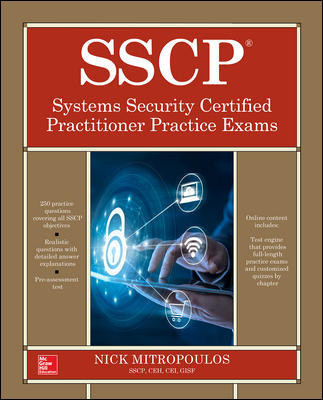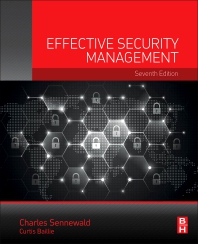Certified? It Makes Business Sense

There are numerous certification programs today. And, according to integrators and industry executives, it is growingly important that companies, their installers, and technicians attain some type of certification. More projects now involve computer and communications technologies, work through an enterprise infrastructure, and integrate myriad security and business systems, says Tom Clancy, president of Acree Daily Systems, Columbus, Ohio.
A just released 2011 Benchmarking Survey by the Custom Electronic Design & Installation Association (CEDIA) found that “systems integration/control” was the most profitable product category for them in 2010.
So it is not surprising that Microsoft and Cisco certification are important.
Microsoft certifications are available for most Microsoft technologies and all skill levels. Achieving a Microsoft certification includes access to the member site and a vast, global network of other certified professionals.
Among Microsoft certification:
Microsoft Certified Architect (MCA)
The Microsoft Certified Architect program recognizes and provides advanced certification to practicing architects in an enterprise setting.
Microsoft Certified Master (MCM)
The MCM program helps experienced IT professionals demonstrate and validate their ability to successfully design and implement solutions that meet the most complex business requirements.
Microsoft Certified IT Professional (MCITP)
An MCITP certification demonstrates comprehensive skills in deploying, supporting, and optimizing IT infrastructures.
Microsoft Certified Professional Developer (MCPD)
An MCPD certification demonstrates comprehensive skills in designing, developing, and deploying applications for a particular job role.
Microsoft Certified Technology Specialist (MCTS)
The MCTS certification helps enable IT professionals to target specific technologies and to distinguish themselves by demonstrating in-depth knowledge and expertise.
Microsoft Technology Associate (MTA)
An MTA certification helps students explore career options in technology, prepare for advanced studies and MCTS exams, and demonstrate fundamental knowledge of hardware or IT infrastructure or software technology.
On the Cisco side of things, achieving a Cisco certification is an important step for networking professionals on the way to a successful information technology career. The certification provides end users with a measure to identify qualified individuals who have appropriate skills to be successful.
Cisco Certified Network Professional (CCNP) certification validates knowledge and skills required to install, configure and troubleshoot converged local- and wide-area networks with 100 to 500 or more end-devices. A valid CCNA certification is required to obtain and maintain a CCNP certification.
The CCNP certifies the ability to work with medium-sized networks with technologies such as QoS, broadband, VPNs, and security-oriented features. In addition to CCNA exams, professionals must pass either four separate exams, or a composite exam along with two separate exams.
- BSCI: Building Scalable Cisco Internetworks
- BCMSN: Building Cisco Multilayer Switched Networks
- ISCW: Implementing Secure Converged Wide Area Networks
- ONT: Optimizing Converged Cisco Networks
CEDIA and the Electronic Security Association (ESA) offer certification programs.
When it comes to ESA, for example, there are diverse offerings.
ESA’s National Training School offers a variety of certifications to students who, through prescribed courses of study, meet the criteria for that particular certification. The certification programs and their requirements are listed below. Certifications are granted for a period of one year following the successful completion of a program. Certification is maintained by obtaining 1.2 continuing education units (CEUs) each year (the equivalent of 12 hours of instruction) through attendance at NTS accredited, industry- related education activities.
Certified Alarm/Security Technician (CAT) Level I
To earn Certified Alarm/Security Technician - Level I status, students must successfully complete the Certified Alarm Technician course, or the online equivalent for Alarm Technician Level I course, and pass the two-hour, proctored multiple-choice examination.
Certified Fire Alarm Technician (CFAT)
To earn Certified Fire Alarm Technician status, students must hold a CAT I or higher certification for a minimum of 12 months and successfully complete both the Fire Alarm Installation Methods course, or the online equivalent, and either the Life Safety Code course, or the International Building Code course, and pass each course’s proctored multiple-choice examination.
Certified Alarm Technician (CAT) Level II
To earn Certified Alarm Technician Level II status, a student must hold a CAT I or higher certification for a minimum of 24 months and successfully complete both the Advanced Intrusion Systems course, or the online equivalent, and the Fire Alarm Installation Methods course, or the online equivalent, and pass each course’s proctored multiple-choice examination.
Certified Service Technician (CST)
To earn Certified Service Technician (CST) status, a student must hold a CAT I or higher certification for a minimum of 24 months and successfully complete three courses of study:
- Advanced Intrusion Systems course, or the online equivalent, and pass the two-hour, proctored examination;
- Fire Alarm Installation Methods course, or the online equivalent, and pass the two-hour, proctored examination; and
- Troubleshooting, Service and Maintenance course, or online equivalent, and pass the two-hour, proctored examination.
Certified Systems Integrator (CSI)
To earn Certified System Integrator (CSI) status, a student must hold a CAT I or higher certification for a minimum of 36 months and successfully complete four courses of study:
- Certified Alarm Technician course, or the online equivalent, and pass the two-hour, proctored examination;
- Fire Alarm Installation Methods course, or the online equivalent, and pass the two-hour, proctored examination;
- Electronic Access Control course, or the online equivalent and pass the two-hour, proctored examination; and
- Video System Technologies course, or the online equivalent, and pass the two-hour, proctored examination.
Certified Security Salesperson (CSS)
To earn Certified Security Salesperson status, students must successfully complete the Understanding Alarm Systems course and the Essential Sales Training course and pass each course’s proctored multiple-choice examination. Those holding Certified Alarm Technician Level I certification status may earn Certified Security Salesperson status by attending and successfully completing the Essential Sales Training course and examination.
Then there are certification programs offered by vendors.
According to James Marcella, director of technical services for Axis Communications “We see value in our Axis Certified Professional program in addition to the Cisco CCNA.” It allows integrators to showcase expertise in network video. Once certified, Marcella contends, “you’ll have our global stamp of endorsement that strengthens both your career and your company’s reputation. That’s because being certified not only demonstrates and verifies your individual competence, skills and expertise. It also speaks volumes of your company’s ability to deliver effective network video surveillance.”
With the growth of security video and its connection to Internet Protocol (IP), there is a business benefit in being a certified video system integrator, says Mark Wilson of Infinova.
He says: “Imagine this scenario. An organization that is undergoing the process of installing their new video system finds out that the electrical contractors have installed smaller wall boxes at their facilities than needed for the surveillance system’s fiber optic transmitters. There are thousands of these boxes and it will cost several hundred thousand dollars to replace them. And the transmitter (TX) and receiver (RX) modules only came in one standard size. They have two choices. They can replace the wall boxes with the correct size for standard fiber optic transmitters or go to litigation.”
In this actual situation, lucky for them, after calling in the manufacturer, it turned out that there was a third option. If just the TX module were reduced in size, the RX module could remain the same and both would fit in the “too small” wall box. That customization by the vendor saved the project, the budget and nights of sleeplessness for many people.
Not everyone has been so lucky. Users report that such examples are not infrequent. All too often, consultants and project managers wanting to reduce costs will subcontract the installation of the surveillance system to low-cost cable installers. Called “Joe Trunk-Slammers” by the trade, too many of them are low-competence as well as low-cost.
The quality of the job is typically rushed and substandard. The installation is riddled with errors. Since Joe forgot —or didn’t know how — to terminate a cable properly, the system produces poor quality video. There are reliability issues because the cable bend radius is too tight, among many other errors.
As a result, the customer has to bring in a professional certified integrator to make the solution work. All of a sudden, the money saved with Joe is gone as are additional dollars to verify the proper installation of the system. What was to cost less just cost more. The certified integrator would have been the best investment after all.
According to Wilson, a certified integrator has undertaken training from the manufacturer on how to install its equipment. For instance, Infinova’s hands-on technical product certification class trains integrators and dealers how to install and optimize IP surveillance cameras to deliver the best evidence. The class covers an overview of IP camera installation and configuration as well as a demonstration and review of specific products used in the class, such as an IP megapixel, IP fixed minidome, IP dome, and IP pan/tilt/zoom (PTZ) camera plus video management software (VMS).
Most importantly, there is hands-on installation and configuration of IP cameras using a browser connection followed by a hands-on exercise with the V2240 monitor station software and exploring the power of VMS software control. By actually working with the products, dealers, integrators and installers gain an increased understanding of IP technology, realize that IP video isn’t hard to understand, obtain confidence in installing and configuring IP video products, and receive verification of their knowledge through certification testing. The class constitutes 75 percent hands-on training and 25 percent lecture.
Adds Wilson, one way to discern the value of the classes your manufacturer provides is to find out if you gain credits from professional organizations for taking the class. For instance, vendor certification classes provide BICSI (a professional association supporting the information technology systems) industry. members with 7 CEC credits and ESA members with 0.5 CEU credits. For BICSI and ESA members, this is approximately 40 percent of their continuing education requirements.
There are other benefits of being a certified integrator. Oftentimes, manufacturers provide certified integrators with hands-on, in-field engineering and phone support during pre-sales, design and negotiation, and post-sales stages of the project. They also get an enhanced warranty, an additional year on top of standard warranties. Continuing solution and product training is provided through conferences, newsletters, regional meetings and webinars that will help certified integrators better educate their own staff. They will also have opportunities to meet and exchange ideas, experiences and solutions with their peers.
Don’t let Joe sabotage your customer’s system before it is even up and running. Assure customers know the reasons they need to hire a certified integrator. Explain the types of training you have and how it was blessed by one of the professional organizations.
Looking for a reprint of this article?
From high-res PDFs to custom plaques, order your copy today!






